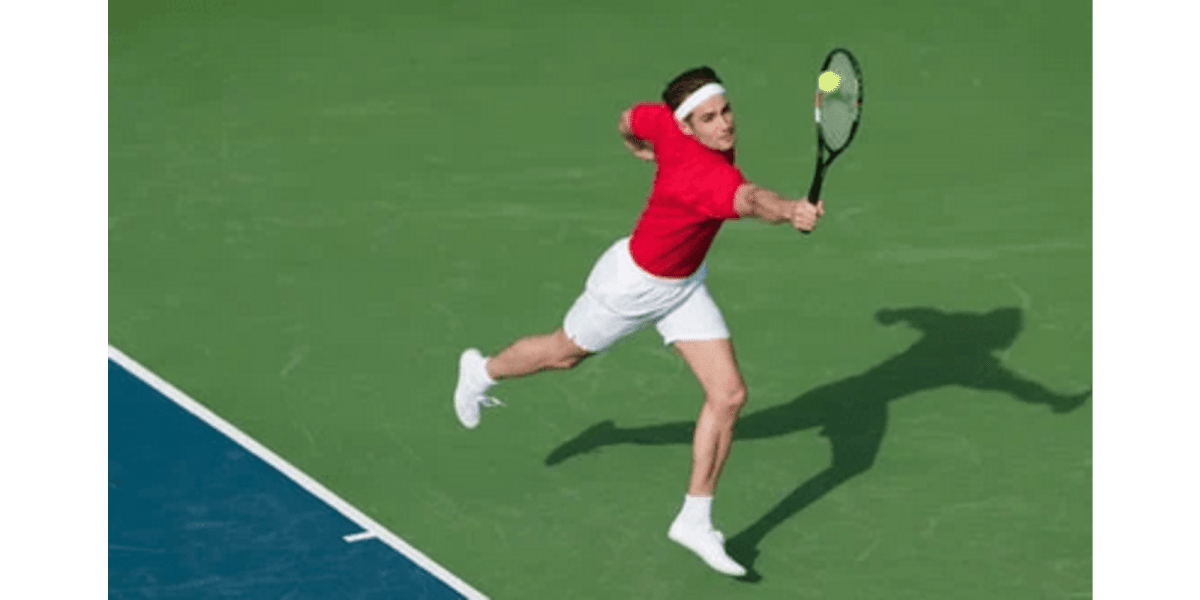Introduction:
Tennis offers a thrilling blend of physical activity and strategic thinking, making it an appealing sport for many. For those just starting out, understanding the essential techniques is crucial to becoming a proficient player. Mastering fundamental skills such as grip, footwork, and basic strokes can greatly enhance a beginner's enjoyment and performance on the court.

Grasping the basic techniques also involves familiarizing oneself with key tennis rules. This knowledge allows players to engage more effectively during matches and find joy in the game. Whether it’s learning how to serve or understanding scoring, every bit of information adds to a budding player’s confidence.
As they embark on this exciting journey, beginners should focus on developing a strong foundation that helps them progress with each session. This guide will cover the core skills that will set them up for success in tennis.
Understanding the Basics of Tennis
Tennis consists of specific components that every beginner should grasp. By learning about the court layout, equipment needed, and basic rules, a player lays a solid foundation for understanding the game.
Court Layout and Equipment
A standard tennis court is rectangular, measuring 78 feet long and either 27 or 36 feet wide, depending on whether it's a singles or doubles match. The court is divided by a net in the middle, which stands 3 feet high.
The court has specific areas marked out, including:
- Service boxes: Located on both sides of the net, these are where players serve.
- Baseline: The back line of the court.
- Doubles sidelines: Wider lines used in doubles play.
Tennis equipment includes a tennis racket and balls. Beginners should choose a racket that feels comfortable. Rackets come in different sizes and weights, affecting control and power. Using the right tennis balls is also essential for learning techniques and enjoying the game.
Basic Tennis Rules
Understanding the basic tennis rules is crucial for play. Matches are typically played in sets, and a player must win a majority of sets to win the match.
Key rules include:
- Scoring system: Points are scored as 15, 30, 40, and then game. A player needs to win four points to win a game.
- Serving: The server must hit the ball into the diagonal service box. If the serve misses, it is called a fault.
- Rally: Players must hit the ball over the net and within the court boundaries.
Following these rules helps create a fair playing environment and enhances the enjoyment of the game.
Mastering Fundamental Strokes

Fundamental strokes are the building blocks of tennis skills. Focusing on the right techniques will enhance a player’s performance and overall game. This section will cover essential techniques for the forehand, backhand, serve, and volley.
Forehand and Backhand Techniques
The forehand stroke is often a player's strongest shot. To execute it effectively, one must use proper grip, stance, and follow-through. Players should start with a comfortable grip, usually the Eastern or Semi-Western grip.
Steps to perform a forehand:
- Positioning: Stand shoulder-width apart.
- Swing: Rotate the torso and bring the racquet back.
- Contact: Hit the ball at waist height and follow through.
The backhand stroke can be executed with one hand or two. A two-handed backhand offers more stability but requires practice. Key steps include:
- Feet Placement: Position the feet for balance.
- Grip: Use an Eastern or Continental grip.
- Follow-through: Extend the racquet across the body.
Serve and Volley Essentials
The serve is crucial as it initiates each point. Proper technique increases power and accuracy. Players should focus on these serving techniques:
- Stance: Stand sideways with feet shoulder-width apart.
- Ball Toss: Toss the ball slightly in front and above.
- Contact Point: Hit the ball at the highest point while snapping the wrist for spin.
The volley is an important shot when moving to the net. For a successful volley:
- Grip: Use the Continental grip for versatility.
- Footwork: Approach the ball quickly to maintain good position.
- Technique: Punch the racquet forward without swinging too much, making sure to keep the racquet face stable.
Mastering these fundamental strokes enhances gameplay and helps in developing a solid foundation in tennis.
Grip and Ready Position

Understanding grip and ready position is crucial for beginners in tennis. A solid grip helps control the racket, while the ready position prepares a player for quick movement. Mastering these basics will enhance performance on the court.
Grip Mastery
Grip is one of the most important aspects of playing tennis. The continental grip is popular among beginners. This grip allows players to easily switch between forehands and backhands.
To achieve the continental grip, players should:
- Hold the racket as if shaking hands.
- Place the base knuckle of the index finger on the second bevel of the racket handle.
In addition to the continental grip, other grip techniques like the eastern and western grips can be used for specific strokes. Mastering different grips can greatly impact control and power during play.
Adopting the Ready Position
The ready position sets the stage for effective gameplay. It ensures that players are prepared for the ball coming from any direction.
To adopt the ready position, follow these steps:
- Stand with feet shoulder-width apart.
- Bend the knees slightly for better balance.
- Keep the racket held up in front of the body, elbows slightly bent.
Players should maintain an alert and focused stance. This position allows for quick lateral movement and swift reactions. Being in the proper ready position can make a significant difference in response time during a match.
Footwork and Movement on the Court

Effective footwork is essential for a beginner tennis player. It allows them to move quickly, maintain balance, and position themselves well for shots. Focusing on footwork techniques and incorporating drills can significantly enhance court movement.
Footwork Fundamentals
Footwork is about more than just moving around the court. Beginners should master basic movements to develop good habits.
-
Split-step: This is the initial hop players make just before an opponent hits the ball. It helps them prepare for movement in any direction.
-
Stances: Proper stances like the ready position enable players to react quickly. They should keep their feet shoulder-width apart for balance.
-
Directional Movement: Players must learn to move side-to-side and forward-backward efficiently. Practicing these movements helps improve agility and speed.
Using the correct footwork can lead to better shot placement and reduce the risk of missing a shot.
Ladder Drills and Court Coverage
Ladder drills are excellent for improving footwork and overall physical agility. They help players develop quick feet and coordination.
Common drills include:
- In-and-Outs: Step in and out of each rung, focusing on speed and control.
- Lateral Shuffles: Moving side-to-side through the ladder enhances lateral movement, important for court coverage.
Court coverage is about getting to the ball effectively. Players should practice moving toward the ball quickly after the split-step.
By integrating footwork drills into practice, players can enhance their ability to respond to various game situations, ensuring they cover the court more effectively.
Scoring and Game Progression

In tennis, understanding how to score and progress through games and sets is essential for any beginner. This section covers the critical aspects of points, games, and sets to help players grasp the scoring system.
Understanding Points and Sets
The basic unit of scoring in tennis is the point. Players start with a score of love (zero). Points progress as follows: 15 for the first point, 30 for the second, and 40 for the third. A player needs to win four points to win a game, but they must lead by at least two points.
When both players reach 40, it’s called deuce. The next point won gives that player the advantage. If they win the following point, they win the game. Once a player wins six games, they claim a set. To win a match, a player must win two sets.
Managing Games and Tiebreakers
Tiebreakers occur when both players win six games in a set. Instead of continuing to a seventh game, a tiebreaker is played to determine the winner of the set.
In a tiebreaker, points are counted normally but players must reach at least seven points with a two-point lead to win. The first player to reach this score wins the set. This system encourages quick and exciting play, making tiebreakers an essential part of the match strategy.
Understanding these scoring dynamics helps players navigate through games and sets with confidence and clarity.
Types of Play: Singles and Doubles
Tennis can be played in two main formats: singles and doubles. Each style has its own tactics and court positioning, which are crucial for success.
Singles Tactics
In singles play, the focus is on individual performance and strategy. Players must cover the entire court, which requires excellent stamina and footwork. Key tactics include:
- Baseline Play: Players often stay near the baseline for powerful groundstrokes.
- Shot Selection: Choosing the right shots, like topspin or slice, can dictate the pace of the match.
- Placement: Hitting the ball to corners or deep in the court can create openings.
Players should also be aware of their opponent's weaknesses. Identifying and exploiting these weaknesses can lead to winning points more effectively.
Doubles Strategies and Court Positioning
Doubles play involves teams of two, which changes the dynamics significantly. Court positioning is essential here. Players usually adopt the following strategies:
- Formation: Teams can choose between “Two at the Net” and “One Up, One Back.” The net players can apply pressure while the back player covers the court.
- Communication: Clear communication is vital to avoid confusion on shot selection and positioning.
- Poaching: This tactic involves a net player intercepting a shot meant for their partner, creating unexpected plays.
Understanding these strategies will enhance performance and make the game more enjoyable for all players involved.
Enhancing Your Tennis Mind Game
Improving the mental aspect of tennis is essential for beginners. A strong mental game helps in making strategic decisions during play.
Key Elements:
-
Strategic Thinking: Players should focus on their opponent's weaknesses. This can guide them in choosing the right shots and plays.
-
Court Awareness: Being aware of surroundings can give players an edge. By keeping track of court boundaries and opponent positioning, they can make better choices.
-
Continuous Improvement: Setting small goals and working on them can boost confidence. Practicing under pressure helps build the mental strength needed in matches.
Techniques to Enhance the Mental Game:
- Visualization: Imagining successful shots can create a positive mindset.
- Breathing Exercises: Taking deep breaths can reduce anxiety and improve focus.
- Positive Self-Talk: Encouraging oneself can combat negative thoughts during a match.
By integrating these strategies and techniques, players will see improvements not just in their game, but also in their enjoyment of tennis. A well-rounded mental game is just as important as physical skills, and it can lead to greater success on the court.
Joining the Tennis Community
Joining a tennis community can greatly enhance a player's experience. Engaging with others can improve skills and provide motivation.
Tennis Clubs: They are a great starting point. Clubs often offer lessons, social events, and leagues. This helps beginners connect with more experienced players, including advanced players who can share tips and strategies.
Local Courts: Finding nearby courts is essential. Many parks and recreation centers provide public access. He or she can practice regularly and meet fellow enthusiasts.
Participating in Drills: Many clubs organize drills. These can focus on improving hand-eye coordination and overall technique. Beginners can learn from watching more skilled players while gaining valuable practice.
Tournaments and Leagues: Joining local leagues allows players to participate in friendly competition. This experience can build confidence and sharpen skills in real-match situations.
Social Events: Clubs often host social events. These are perfect for networking and making friends. A supportive environment fosters growth and encourages players to stick with the sport.
Connecting with the tennis community can make the learning process fun and rewarding. The support and camaraderie provide a strong basis for improving skills and enjoying the game. Players should actively seek out these opportunities to progress in their tennis journey.
Frequently Asked Questions
This section covers key areas that beginner tennis players often wonder about. Understanding these topics can significantly enhance their learning experience and skill development.
What are the fundamental skills a beginner tennis player should learn?
A beginner should focus on developing a good grip, hand-eye coordination, and basic rules of tennis. Learning to serve effectively and keeping score are also important initial skills. Gaining familiarity with the court layout can help in making quick decisions during play.
Which basic tennis strokes should a new player focus on mastering first?
New players should begin with the forehand and backhand strokes. These are foundational for most rallies. Mastering the serve is also crucial, as it initiates each point.
What exercises are recommended for beginners to practice tennis techniques?
Drills such as shadow swings and wall rallies can help beginners practice strokes. Working on footwork drills, like lateral shuffles, is essential for improving movement. Simple serve toss drills can assist in developing a reliable serving technique.
How does a beginner tennis player develop proper footwork and positioning?
Beginners can improve footwork by practicing side-to-side shuffles and quick steps towards the ball. They should learn to position themselves correctly based on the ball's location. Shadowing a coach’s movement can also reinforce good footwork habits.
What are common mistakes that beginners should avoid when learning tennis?
One common mistake is not using the proper grip, which can affect stroke effectiveness. Beginners often rush their swings, leading to inconsistency. Failing to watch the ball until contact is another frequent error that can hinder performance.
How can a tennis beginner improve their serve technique?
To improve serve technique, beginners should focus on their grip and stance. Practicing the toss separately can enhance control. They should also aim for consistent contact points and follow through on their serves for better accuracy.



